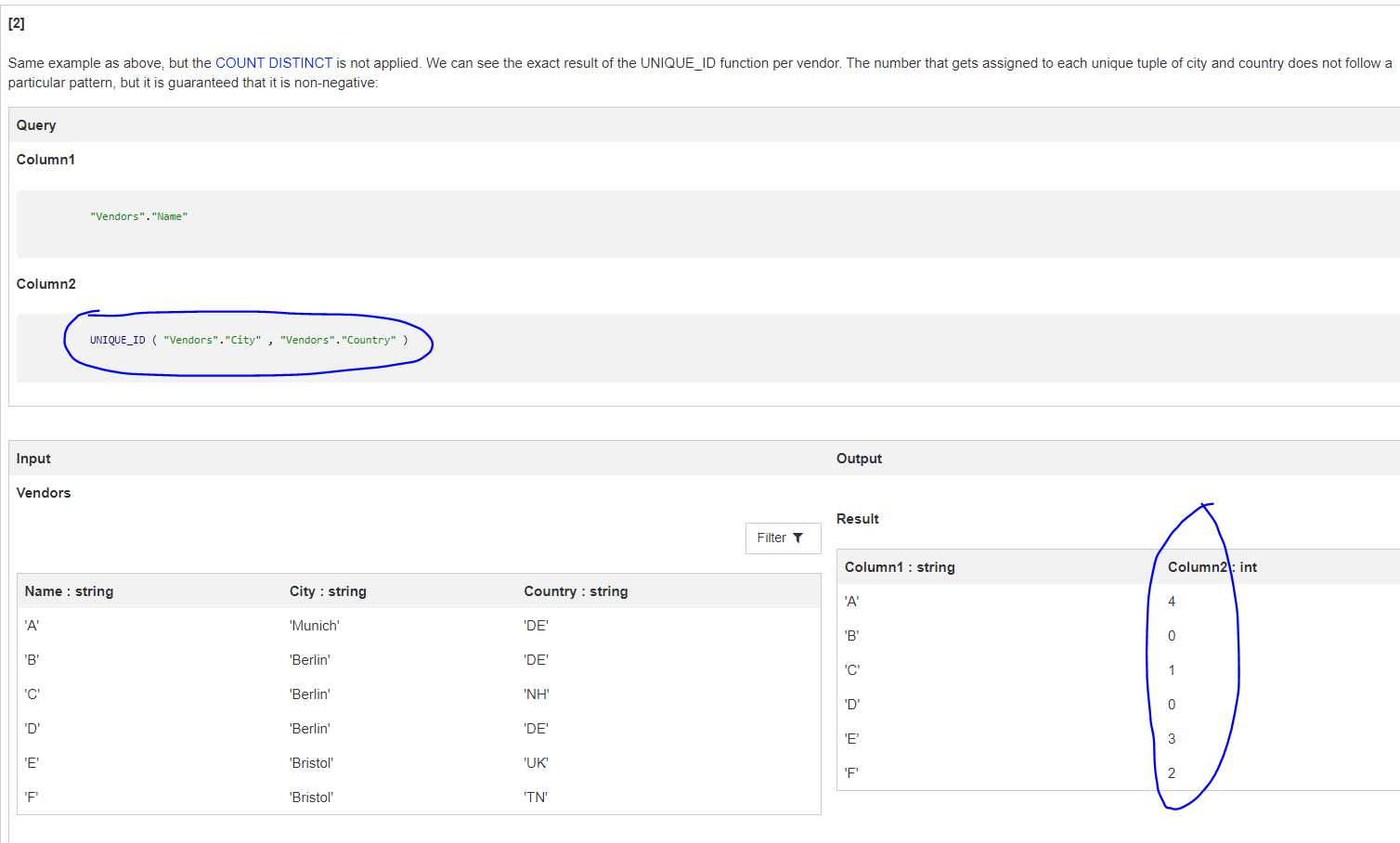For me, the output is not clear -
- Given 'A' has 4 unique combinations (Munich - DE, NH, UK, TN) - as expected
- Given that 'B' has 0 unique combinations. As per my understanding, the O/P I expect is 3 (Berlin - DE, UK, TN)
- Given that 'C' has 1 unique combination (Berlin- NH) - as expected
- Given that 'D' has 0 unique combinations - as expected (all the unique combinations wrt Berlin - DE, NH, UK, TN are covered in the B and C Cases).
- Given that 'E' has 3 unique combinations (Bristol - DE, NH, UK) - as expected
- Given that 'F' has 2 unique combinations. As per my understanding, the O/P I expect is 1 (Bristol - TN) - as the combinations (Bristol - DE, NH, UK) are covered in the case of 'E' above.
Can you please correct me if my understanding of the concept is wrong? Also please provide your inputs.




